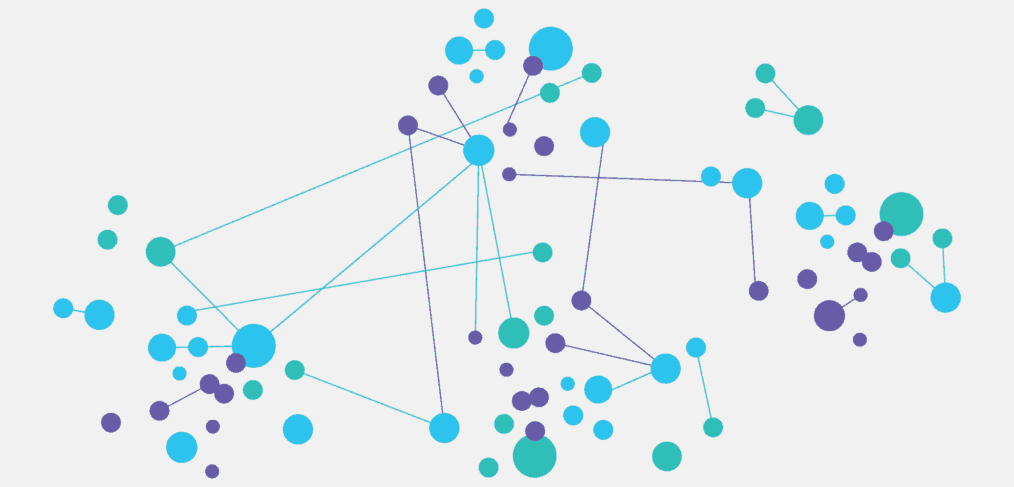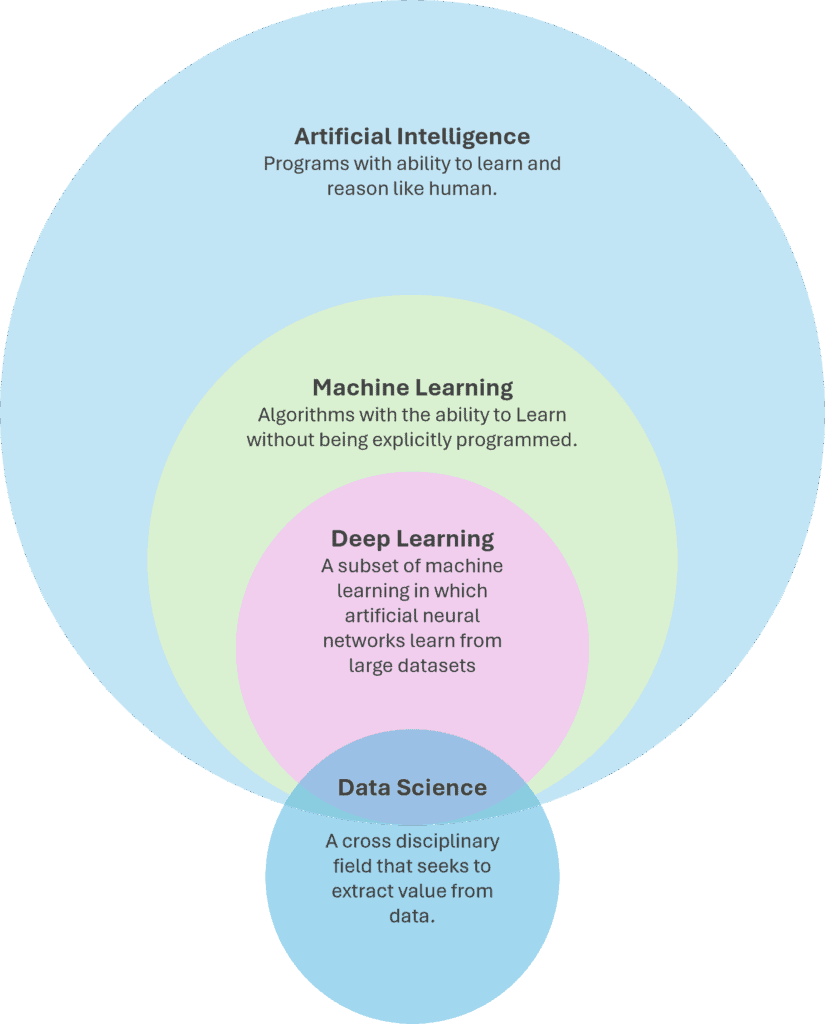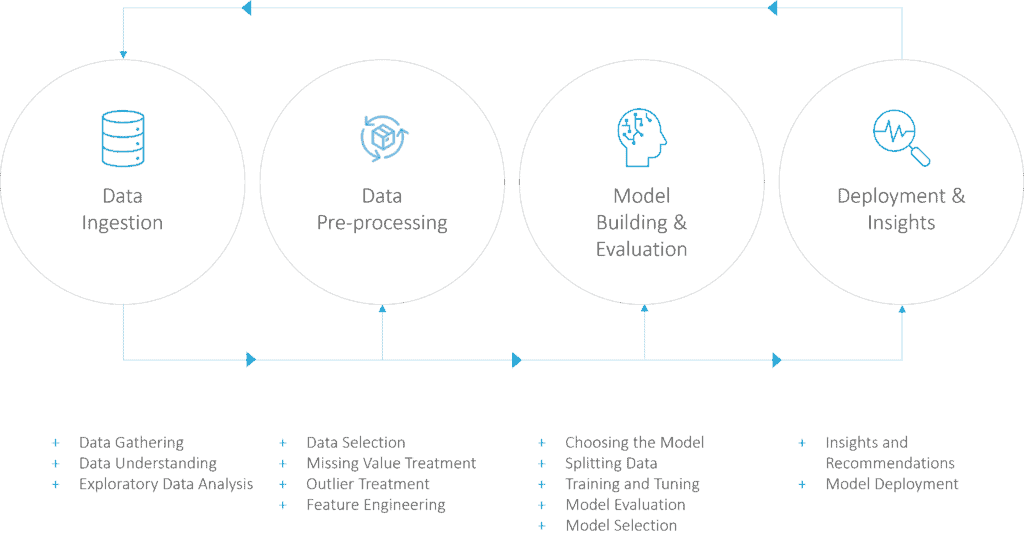
Netflix Knows Your Guilty Pleasures, Here’s Why
Ever finish a series at 3 am and find Netflix lining up the perfect next binge? That’s not magic or mind reading. That’s Machine Learning (ML), quietly working behind the scenes, learning what you love and what you skip, so it can guess your next move better than your best friend.
But what exactly is Machine Learning (ML)? And how does it power everything from Instagram’s endless scroll to self-driving cars? Let’s break it down.
What on Earth Is Machine Learning (ML)?
Imagine teaching a 4-year-old to tell cats from dogs by showing lots of animal pictures. Soon, they recognize new animals on their own – ML works similarly. Computers learn patterns from examples so they can make predictions on new data.
ML is about giving computers the ability to learn from examples rather than following a predetermined set of rules. It’s like showing thousands of cat photos to a computer so that it eventually recognizes cats in new pictures, even if they’re wearing sunglasses.
The Family Tree: AI, ML, and Deep Learning
Confused by the buzzwords? You’re not alone! Here’s your easy-to-understand cheat sheet:
Artificial Intelligence (AI)
The big idea is making machines act smart, like humans. It includes everything from voice assistants like Alexa, to game AIs that beat you at chess, to simple rule-based programs that follow if-this-then-that logic.
Machine Learning (ML)
A branch of AI where machines learn from data instead of being given step-by-step instructions. For example, Netflix learning what shows you like by analyzing what you’ve watched, so it can suggest your next favorite series.
Deep Learning (DL)
A special type of ML that uses artificial “brains” called neural networks with many layers to spot really complex patterns. This is what powers things like self-driving cars recognizing pedestrians or apps that turn your spoken words into text.
Did you know?
Voice assistants like Siri and Alexa rely on deep learning to understand your voice, even when you mumble at 2 am.
Why Should You Care? (Besides Netflix Recommendations)
ML isn’t just here to suggest your next binge. It’s quietly revolutionizing industries you rely on every day:
Healthcare
Imagine doctors with superpowers. ML algorithms can scan thousands of X-rays or MRIs in seconds, spotting early signs of diseases like cancer with exceptional accuracy. It’s like giving doctors a second pair of eyes that never get tired.
Finance
Ever gotten a “Was this you?” alert from your credit card issuer? That’s ML working 24/7 as your personal fraud detective, scruitinizing millions of transactions in real-time to catch crooks faster than you can say “credit card decline.”
Retail
Think of Amazon’s “Customers who bought this also bought…” feature – it’s scarily accurate! Thank ML. By analyzing what millions of shoppers love (or leave behind), it offers personalized suggestions that make shopping easier, and yes, more addictive.
In short, ML helps industries work smarter and faster, improving everything from our health to our shopping carts.
How Do Machines Learn?
Now that you started getting hold of what ML is, let’s see how computers learn in three fun ways: curious kids (Supervised Learning), sharp detectives (Unsupervised Learning), and avid gamers (Reinforcement Learning):
1) Supervised Learning
Like a curious kid practicing homework with an answer key, we train the computer using a dataset of questions and correct answers. Over time, it learns to spot patterns and predict answers on its own.
Example:
- Predicting house prices: based on data like location, size, and number of bedrooms.
- Medical diagnosis: feeding thousands of labeled images of healthy vs. diseased tissue so the model can spot disease in new scans.
2) Unsupervised Learning
Like a sharp detective finding hidden clues, in Unsupervised learning no right answers are given; the model must group or make sense of data on its own.
Example:
- E-commerce: grouping shoppers by their buying habits to design targeted promotions.
- Streaming platforms: clustering viewers by preferences to launch new shows tailored to specific tastes.
3) Reinforcement Learning
Like a gamer levels up by earning rewards, an agent explores an environment, trying out actions and learning from rewards or penalties.
Example:
- AlphaGo: the AI that beat world champions at the board game Go.
- Robotics: teaching a robot arm to pick up objects without breaking them.
How ML Really Works: The Recipe from Messy Data to Mind-Reading
Before ML can make smart predictions, it follows a step-by-step process, from collecting and cleaning data to building, testing, and finally using the model in real life. Think of ML like baking a cake, but with data instead of flour:
1. Collect Ingredients (Data Ingestion)
Gather data from spreadsheets, tweets, sensors, or transaction logs.
Example: A retailer collects purchase history, browsing habits, and customer reviews.
2. Prep the Ingredients (Data Pre-processing)
Clean up missing info, correct typos, handle inconsistent formats, and convert text or categories into numbers.
Example: Translating “New York” and “NY” into a consistent format.
3. Bake the Cake (Model Building)
Choose an algorithm (like linear regression or neural networks), train it on the data, and fine-tune until it predicts accurately.
Example: Selecting a Linear Regression, Classification or Clustering model based on the problem at hand. For house price prediction we use a linear regression model, for loan-default prediction we use classification model and for customer segmentation we use clustering model.
4. Taste Test (Evaluation)
Use metrics like accuracy, precision, recall, or mean squared error to see how good the model is.
Example: For spam detection, you’d want high precision (few false positives), so legit emails don’t end up in spam.
5. Serve the Cake (Deployment)
Embed the trained model into an app, website, or device so it can start making predictions live.
Example: Integrating a recommendation engine into an e-commerce site.
6. Keep It Fresh (Monitoring & Maintenance)
Regularly check the model’s performance, retrain with new data, and update to stay relevant.
Example: Updating a fraud detection model as scammers find new tricks.
The Challenges Nobody Tells You About
ML is amazing, but it’s far from perfect. Here’s what’s lurking under the hood:
Bias
ML models can unintentionally pick up prejudices hidden in historical data, leading to unfair or even harmful outcomes. Remember the headlines about facial recognition systems misidentifying people of color more often than white faces? That’s a classic example of bias in ML, and why companies like IBM and Amazon paused their facial recognition tools in 2020 over accuracy and fairness concerns.
Explainability
Some ML models, especially deep learning networks, work like black boxes – they give you an answer, but not the “why.” This becomes a huge issue in fields like healthcare or law, where decisions can impact lives. Just imagine a loan application denied by an algorithm you can’t question – that’s why regulators and researchers are pushing for more transparent “explainable AI.”
Environmental Impact
Training advanced ML models can consume massive amounts of electricity. In 2019, researchers found that training a single, large, deep learning model could emit as much carbon dioxide as five cars over their entire lifetimes. This raises concerns about the environmental footprint of AI, sparking efforts to make models more efficient and sustainable.
Check out my blog Ethics, Bias, and Hallucinations for a closer look at these important challenges!
Final Thoughts
Machine Learning is revolutionizing how we live, work, and play. It’s like giving computers a sixth sense. But as powerful as it is, we need to build and use it responsibly, keeping fairness, transparency, and ethics front and center.
Remember: ML isn’t magic; it’s math + data + human creativity. Whether you are 16 or 60, understanding the basics puts you ahead in a world where data rules.







